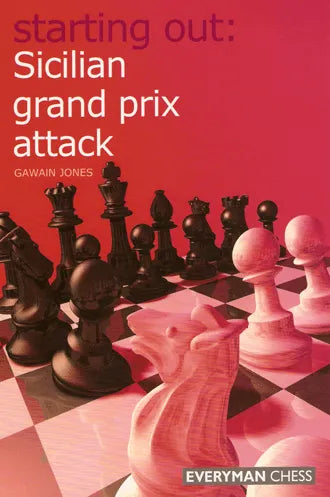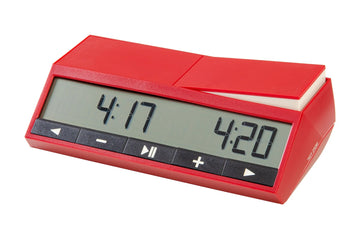The Sicilian Defense: Master The Open Sicilian
If you decide to start the game with the King’s Pawn Opening (1. e4), then you must be prepared to face the Sicilian Defense (1. …c5). The Sicilian Defense deservedly has a reputation for sharp, aggressive, double-edged middlegames. If that is not the sort of chess you enjoy, then you should probably avoid playing 1. e4 with White altogether!
If you do plan on playing the King’s Pawn Opening, then you need to know how to fight against the Sicilian. 1. …c5 is Black’s most popular reply to 1. e4, as well as being the most challenging. Although there are many so-called “Anti-Sicilian” options, this article is going to cover the Open Sicilian, where White responds with aggressive play of their own.
In this article, you will learn:
- Why you should consider playing the Open Sicilian with White.
- Black’s main options and how to counter them.
- Our top book recommendation to help add the Open Sicilian to your opening repertoire.

Introduction To The Open Sicilian
The Open Sicilian begins with the moves 1. e4 c5, 2. Nf3.

Why Play The Open Sicilian?
At master level, the Open Sicilian performs better than any of White’s second move alternatives. The statistics show that the Open Sicilian has:
- The highest percentage of White wins, and;
- The lowest percentage of Black wins.
Despite this, some players still avoid 2. Nf3 with White. The main reason is the vast amount of opening theory which must be learned in order to play the Open Sicilian successfully. Black has many distinct systems within the Open Sicilian, each of which are very different from one another. The Open Sicilian player with White needs to be prepared for all of them.
Related: The 10 Best Chess Openings For White.
There is no getting around the fact that playing the Open Sicilian necessitates dedicating serious effort to opening study. Whichever player works harder before sitting down at the board will tend to enjoy a large practical advantage over their opponent.
You can be sure that those who play the Sicilian Defense with Black will have done their homework. The only realistic way to compete with them is to do the same.
Some chess players simply do not have the time or inclination for this level of opening preparation. If that sounds like you, then you should instead choose one of the Anti-Sicilians, for example:
- The Alapin Variation, with 2. c3.
- The Closed Sicilian, with 2. Nc3 and a kingside fianchetto.
- The Smith-Morra Gambit, with 2. d4, followed by 3. c3.
- The Grand Prix Attack, involving f4 and Nc3.
However, as we have already seen, sidestepping the Open Sicilian comes at cost. Objectively, the Anti-Sicilians give Black greater opportunities to equalize.
How To Reach The Starting Position Of The Open Sicilian
The idea behind White’s early development of their kingside knight is to support a quick d4 advance, usually on move three.

Black has several options on move two, but after say 2. …d6, 3. d4 cxd4, 4. Nxd4 we get to see the typical structural imbalance of the Open Sicilian:
- Black has traded their c-pawn for the White d-pawn. In so doing, Black has established a central pawn majority. This offers Black strong potential to play in the center later.
- White has placed a knight on the d4 square, and a pawn on the e4 square. This provides White with a space and activity advantage.

We will now provide an introduction to each of the main systems Black can go for. This will give you an idea of what to expect if you decide to play the Open Sicilian with White.
The d6 Systems
The Najdorf Variation
The little pawn move 5. …a6 may look benign, but it marks the beginning of one of the Sicilian Defense’s sharpest variations.

One of the ideas behind …a6 is to prevent a White piece from landing on b5. Another point is to prepare the …b5 advance, gaining space for Black on the queenside.
White has many ways to fight against the Najdorf. One of the most popular is to castle queenside and launch a kingside pawn storm. This is known as the English Attack. An example position is shown below, where both kings will likely find themselves endangered in the near future due to the opposite side castling.

Related: When A Pawn Storm Can Make Sense.
The Dragon Variation
By playing 5. …g6, Black signals their intention to fianchetto their dark-squared bishop. This bishop is a very powerful piece for Black, simultaneously fulfilling both offensive and defensive roles. One of White’s key middlegame objectives is often to trade off Black’s “Dragon” bishop.

The “Dragon Variation” is every bit as aggressive as its name suggests. It is generally accepted that White’s best way of putting it to the greatest test is to castle queenside and launch a kingside pawn storm. The fact that Black has played their g-pawn to g6 provides a target for the White pawns to latch on to when they reach Black’s castle.

Black may also play …g6 earlier than on move five. This is known variously as the Accelerated Dragon or the Hyperaccelerated Dragon, depending on exactly when Black plays …g6. This offers White the opportunity to steer the game in a different direction by advancing c4 and establishing a Maroczy Bind setup. In this case, White should castle kingside and play a more patient, positional game.
The Classical Variation
Black may also play the natural developing move 5. …Nc6, as illustrated below.

White’s sharpest reply to the Classical Variation is 6. Bg5 - the Richter Rauzer Variation. In this line, again White usually goes for queenside castling. Black’s approach is more flexible. They may castle kingside, castle queenside, or forego castling entirely.

In some cases, White should be prepared to give up their dark-squared bishop in exchange for Black’s knight on f6, introducing an important material imbalance into the position.
The e6 Systems
The Four Knights Variation
At first glance, this looks very similar to the Classical Variation. The only difference is that Black has played …e6 instead of …d6. However, this subtlety matters! In this, the Four Knight’s Variation, Black’s dark-squared bishop is ready to develop from its starting square.

One idea for Black is …Bb4 to create an annoying pin against the White knight on c3, thereby introducing the threat of …Nxe4. For this reason, White may spend a move preventing …Bb4 by playing a3. White also often pushes f4 to control important central squares.

Related: Up Your Game With These 10 Chess Tips.
The Taimanov Variation
Black can also play …Nc6 before …Nf6. It would be easy to believe that such a nuance should make very little difference. In fact, it can alter the entire course of the struggle.

Black has not played …Nf6, which is a move that ordinarily provokes White into playing Nc3 to defend their pawn on e4. Therefore, White’s c-pawn is still mobile. This affords White the option of playing c4, establishing the Maroczy Bind structure with pawns on c4 and e4.

The middlegame struggle in a position like this often revolves around Black attempting to play the freeing pawn breaks …b5 or …d5 in good circumstances. If White can prevent these two pawn breaks, Black will remain cramped for space.
The e5 Systems
The Sveshnikov Variation
This is one of Black’s most double-edged ways of playing against the Open Sicilian. After developing both knights, Black lunges forward in the center with …e5.

White’s knight is forced to move away from d4. If both players know the theory, then the White knight will dance around the board for a few moves, first going to b5, then eventually to a3.
Due to playing …e5, Black ends up with a weak square on d5. Black tries to make up for this positional weakness with aggressive play on the kingside and in the center.

Black often willingly allows damage to his own kingside pawn structure in order to push one of his doubled f-pawns ahead via …f5. Black may also use the semi-open g-file to attack. Meanwhile, White ought to utilize the strong outpost on d5 and potentially try to target Black’s weak backward pawn on d6.
The Kalashnikov Variation
This is another instance of a slight difference in move order making a big difference to the eventual middlegame. When Black plays …Nc6 and …e5 before …Nf6, it leads to an opening system of a different character entirely.

In the main line, White is again able to quickly play c4 to set up the Maroczy Bind. However, in this case the Black pawn on e5 provides Black an important outpost square on d4. White needs to be vigilant about the possibility of Black playing …Nd4 at some point.

Getting Started With The Open Sicilian
As you can see, the Open Sicilian is a deep ocean of opening theory. This article has barely scratched the surface. We have not even touched on the many sidelines Black has at their disposal, such as:
- the Nimzowitsch Variation, with 2. …Nf6.
- the O’Kelly Variation, with 2. …a6.
- the Marshall Counterattack, with 2. …e6 and 3. …d5.
Therefore, in order to complete your education in the Open Sicilian, we have a further recommendation for you.
Book Recommendation
Entire books have been written about each variation of the Open Sicilian. However, if you are looking for a single book to guide you against everything, then look no further than GM Ivan Saric’s book: The Open Sicilian: An Ambitious White Repertoire for Club Players.

Summary: Is The Open Sicilian Right For You?
The Open Sicilian can be the perfect way to meet the Sicilian Defense with White if you:
- Favor open positions: the early exchanges on d4 creates a relatively open center, leading to games where tempo and tactics tend to be more important than slow, strategic maneuvering.
- Enjoy sharp, fighting chess: You should thrive in complications and embrace the combative middlegames that the Open Sicilian produces.
- Are unafraid of opening memorization: There are a great many opening systems Black can play in the Open Sicilian. You should be ready to roll up your sleeves and learn enough to compete with a well-prepared Sicilian Defense opponent on at least equal terms.
If you are ready to accept the challenge and take the fight to Black, then continue your education in the Open Sicilian today!









